Please DO Read the Endodontist’s Postop Report
Dentists referring cases to Endodontists for treatment frequently give the post op reports they receive only a cursory glance before proceeding with restoration of the tooth. Many Endodontists have gone away from the concept of a Cavit or Cavit/IRM based temporary restoration to material that has higher compressive strength to try to ensure better durability and strength of the temporary. In many cases this involves the use of a colored, bonded core paste material that is used to build up the tooth or seal the access cavity. In my office, I prefer to use a dual cure blue colored, bonded core paste by Bisco – Rebilda DC. Unlike a tooth colored material, this signals to the patient and to the referral that the final restoration has not been completed and further work is needed to complete rehabilitation of the tooth.
Dentistry has finally begun to understand that the best results are achieved when the orifices are sealed after Endodontics with a bonded material and then immediately followed by some types of core buildup, when necessary.
This provides:
(1) optimum seal for the canal system
(2) increased strength of the tooth making it much less likely that catastrophic fracture will occur prior to restoration
(3) greater protection for the treatment and tooth should the patient have to delay treatment for financial or insurance reasons.
However, there are still some referrals who refuse to allow Endodontists to place such cores and insist that the tooth be temporized and returned to them without placement of such foundational restorations. In such cases, one compromise is that the orifices are bonded with a colored flowable composite material and some sort of spacer, usually consisting of a sponge or cotton is placed over the orifice. The access is then closed with a bonded material such as core paste and specific instructions are given to the restoring Dentist on the postop report indicating that this seal is only TEMPORARY. It must be removed and the tooth adequately restore. .
Unfortunately, there are situations in which the post op reports are not adequately scrutinized and, seeing a blue material in the orifice, the referring dentist omits to remove the material and preps directly over the temporization. This results in castings that are cemented over teeth with large voids in the chambers that are occupied by either sponges or the cotton pellets. We know that over time, crowns can leak. Eventually, this spacer material can accumulate fluids and possibly result in further symptoms or Endodontic failure.
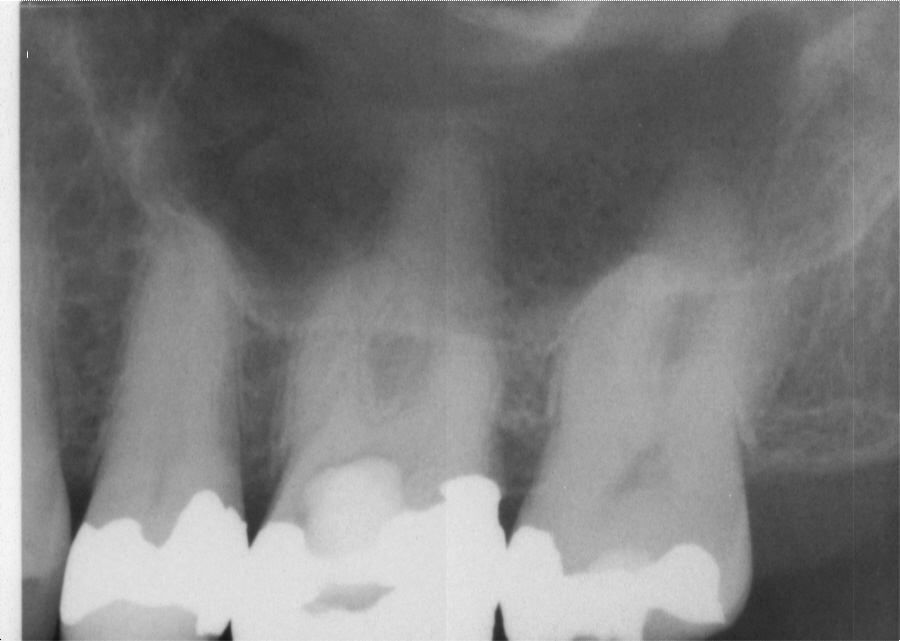
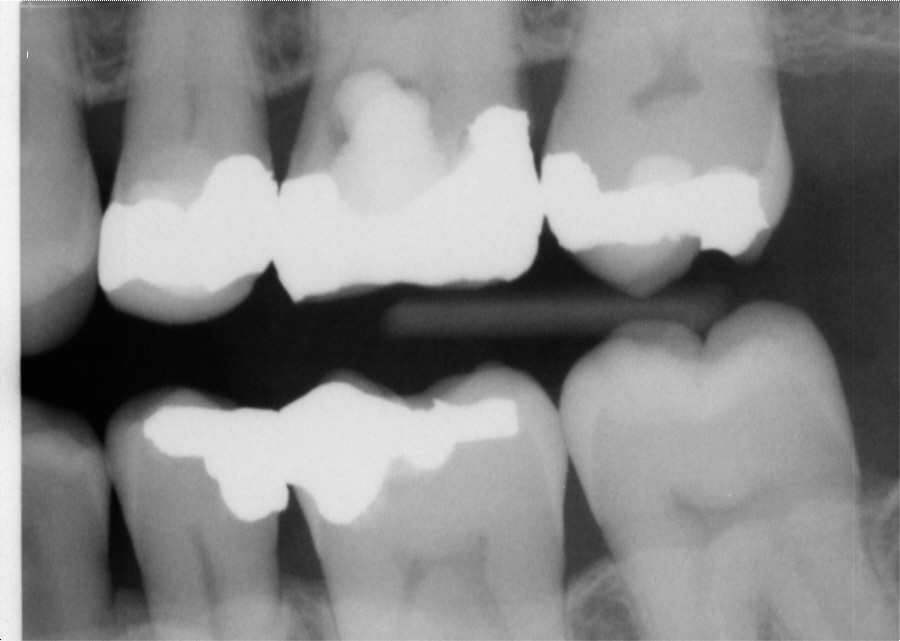
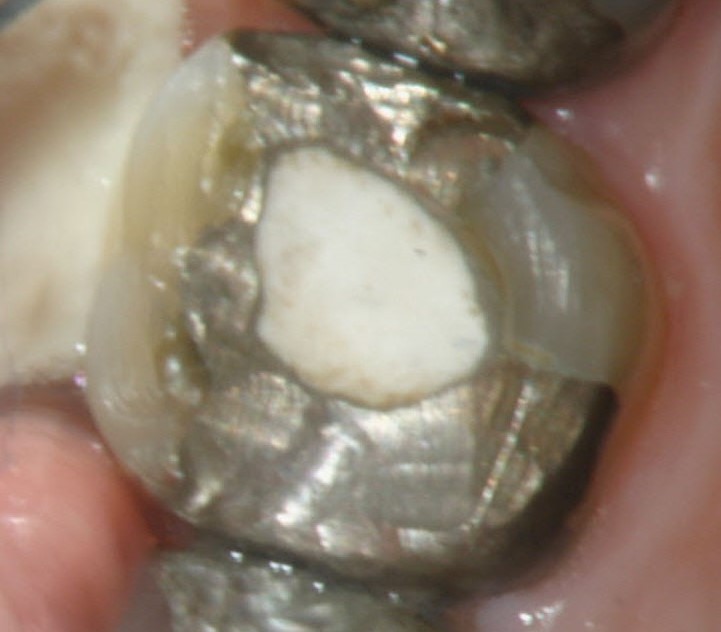
Patient referred for continuation of treatment of the maxillary left first molar. Referring Dentist could complete locate orifices and was drifting dangerously close to perforating the tooth.
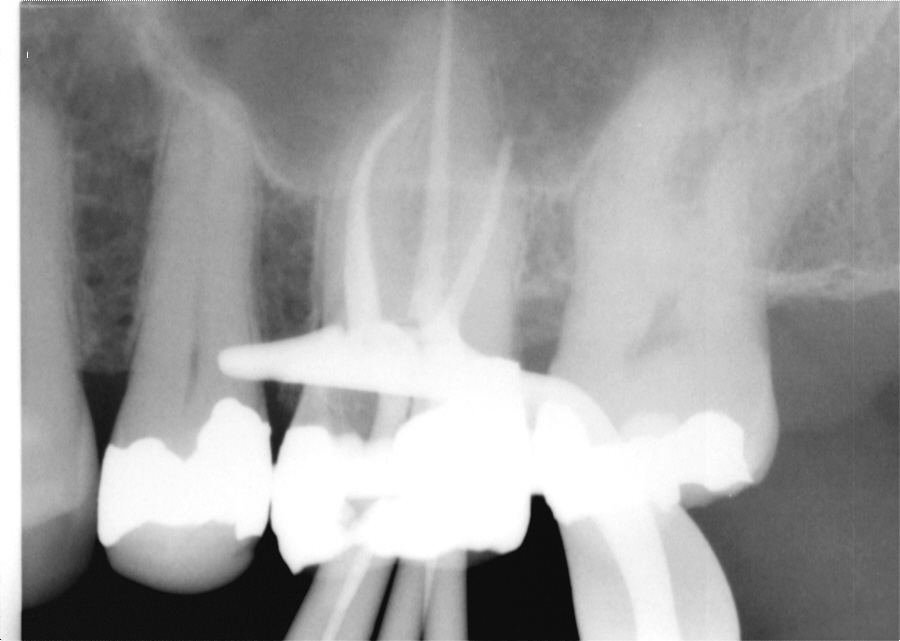
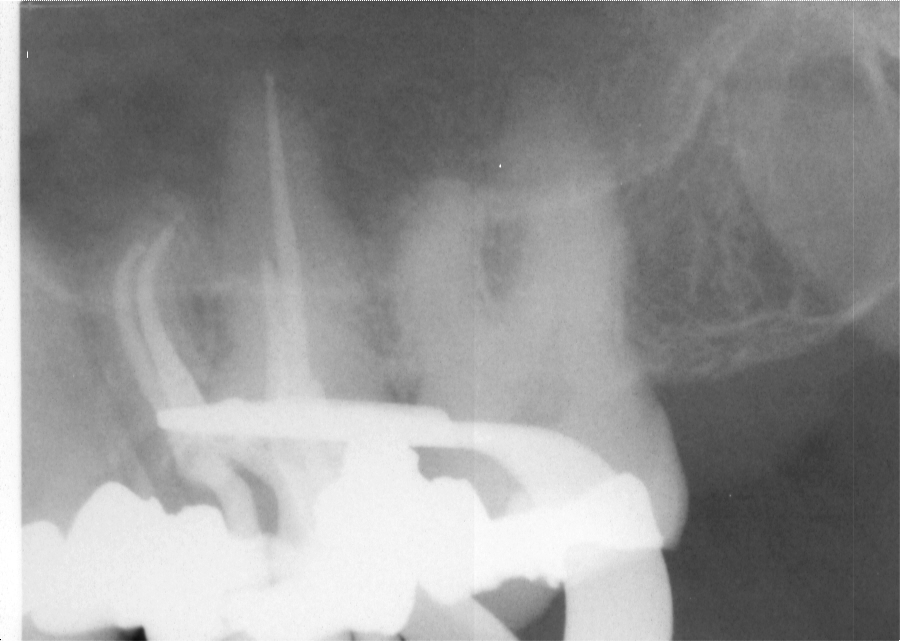
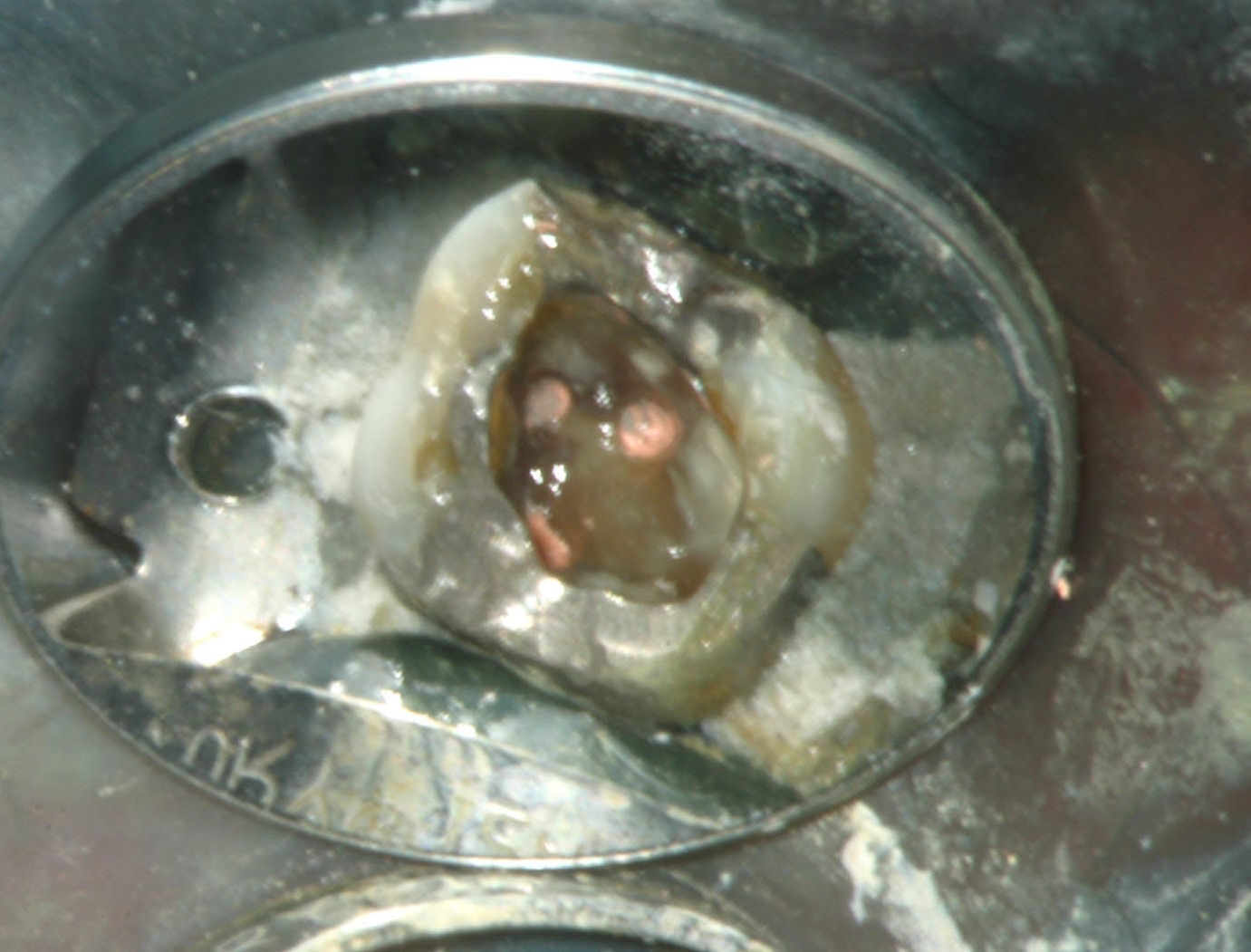

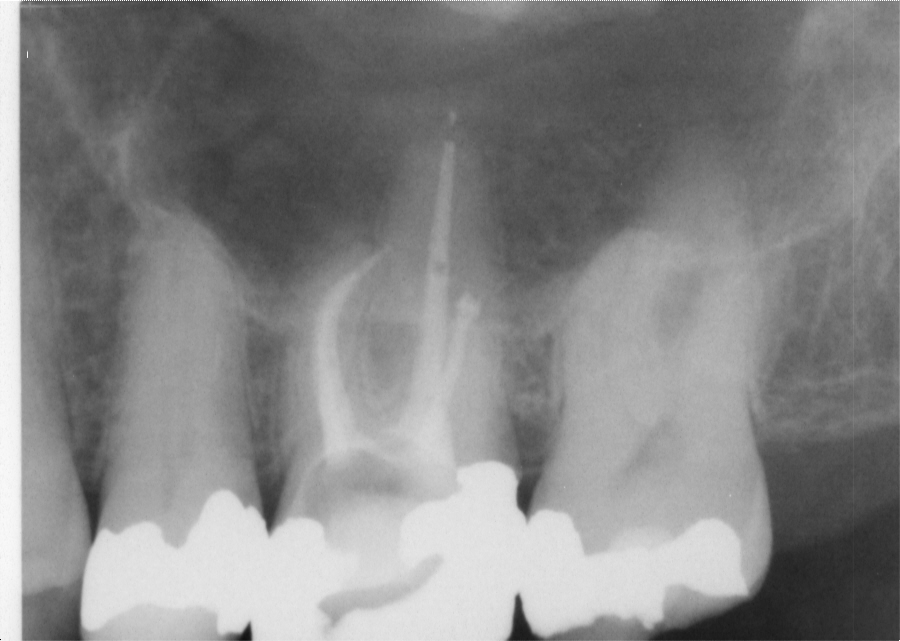
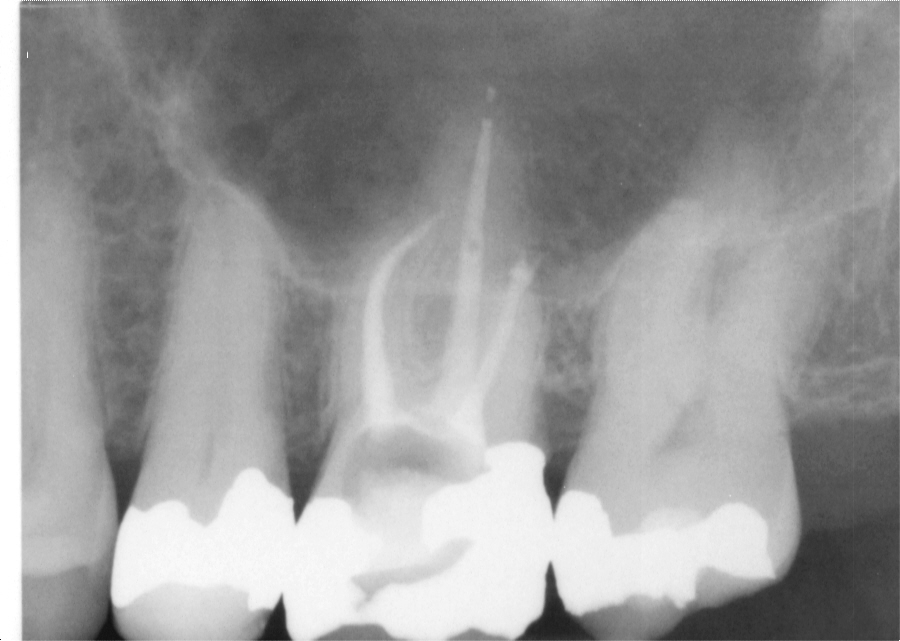
This case shows a maxillary molar tooth that was treated by me and then temporized with an orifice bond, sponges and the access cavity closed with a blue core paste material. The referring dentist did not read the post op report adequately and prepared the tooth for a crown, not removing any of the old amalgam or the access filling I placed. Evidently, they did not take a bitewing radiograph prior to preparation of the tooth or cementation of the Crown.
The bitewing radiograph revealed a large void in the chamber that corresponded to the exact appearance of the tooth immediately after the endodontics was completed. The temporary access filling and proximal amalgams had never been removed and the spacers were still present. Although the patient was asymptomatic at this point, some 12 years later, it was extremely disappointing to see this obvious error.
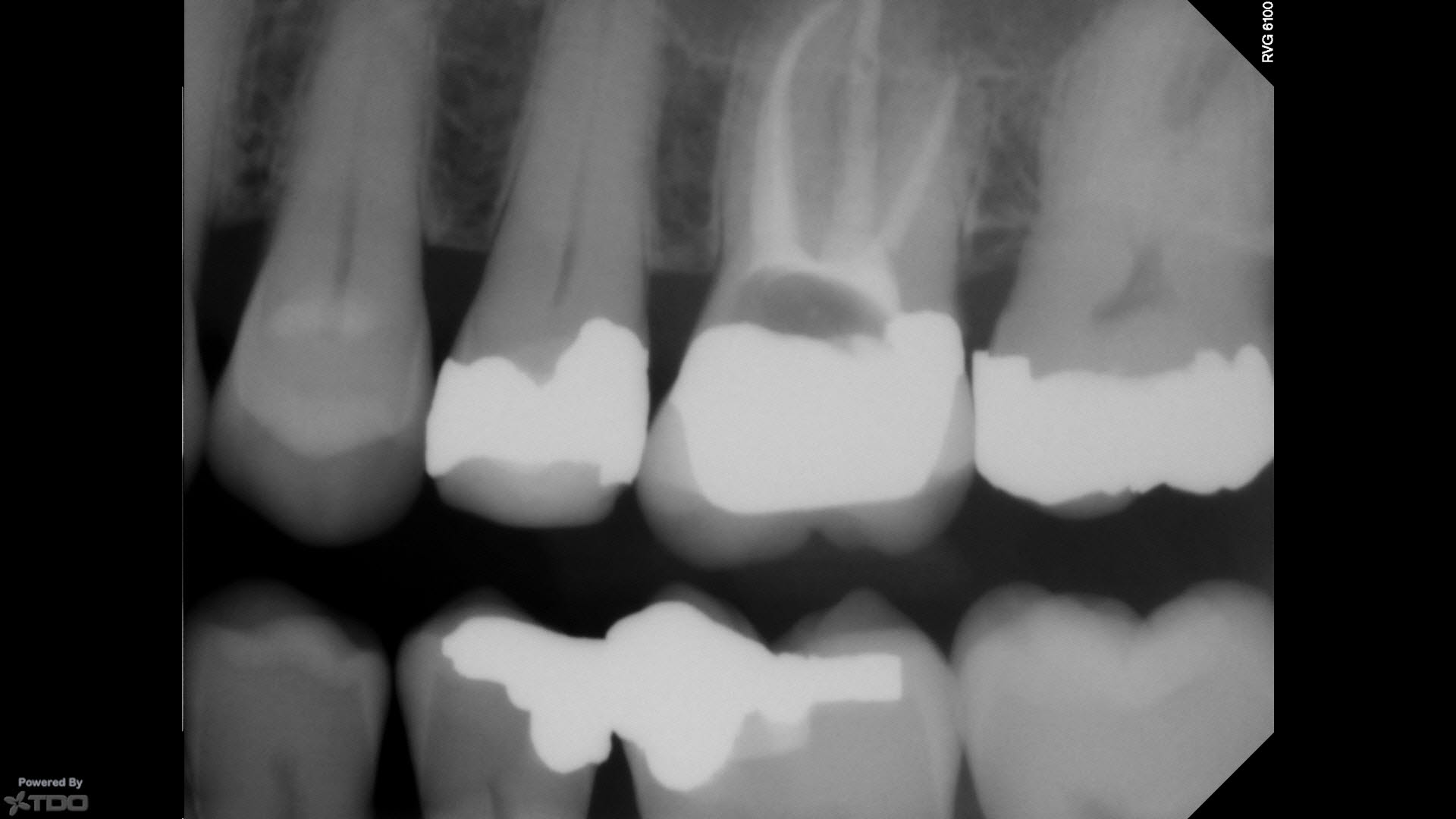

Good endodontic treatment is predicated upon the ability to clean shape and then obturate the canal system, taking special care not to leave any voids or areas that may result in a long term failure. The restoration is the final step in accomplishing this goal, as well as returning the tooth to function. On recall, this patient appears to be asymptomatic but the tooth will always remain a concern in my mind, because of this unnecessary void.
Prior to preparation of the tooth for final restoration, I encourage my referrals to closely examine my post op report and any instructions that are given. Failing to do so may result in lack of recognition of important clinical details that may affect the restoration of the tooth and lead to long term failure of the case.
